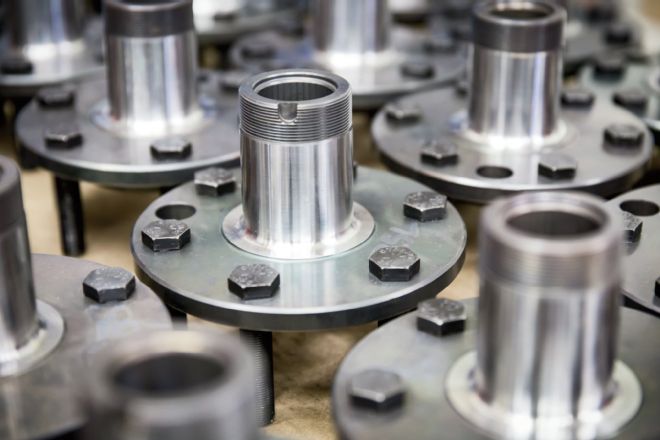
 Harry Wagner
Contributor
Photographers:
Manufacturers
Harry Wagner
Contributor
Photographers:
Manufacturers
The earliest known production of steel was excavated from an archaeological site in Turkey and dates back over 4,000 years. Since that time, metallurgy has advanced by leaps and bounds, and we now have the ability to combine elements and create varied metal alloys for different purposes. While we don’t have time to document all of the last 4,000 years, we can shed some light on which materials are the best choice for various applications including chassis and rollcages, skidplates, axlehousings, and more.
This story will borrow heavily from Carroll Smith’s Engineer to Win book. Smith claims that all failures are human in origin. He doesn’t believe in “bad luck.” Rather, failures result from components that are under designed for the task at hand, poorly manufactured, improperly installed or maintained, or subjected to abuse. Abuse is common in the arena of off-road racing, where we don’t have the luxury of a smooth track, but isn’t that part of the appeal? We will focus on choosing the proper materials during the design and build process. If the topics here pique your interest it is certainly worth picking up Engineer to Win for a more thorough discussion of metallurgy and how it relates to vehicles.
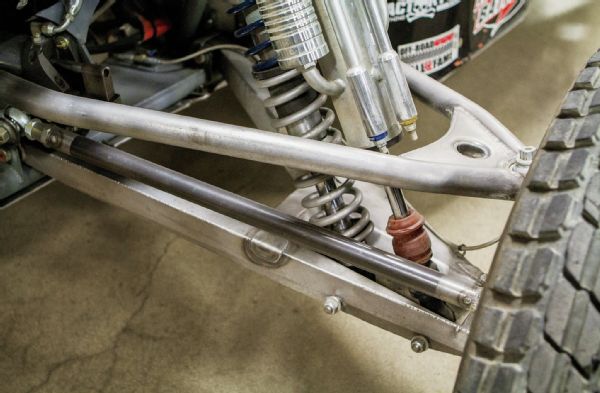 Note how the upper A-arms that Samco Fabrication built for this Class 1 car were constructed from tubular chromoly, while the lower arms were formed from plate chromoly. The same material is used, but the tubular upper arms are easier to manufacture and weigh less, while more robust lower arms are internally reinforced to resist impacts.
Note how the upper A-arms that Samco Fabrication built for this Class 1 car were constructed from tubular chromoly, while the lower arms were formed from plate chromoly. The same material is used, but the tubular upper arms are easier to manufacture and weigh less, while more robust lower arms are internally reinforced to resist impacts.
Properties of Metal
“Steel” consists of iron and carbon. Iron is naturally soft and ductile (changes shape), but carbon can be added to combat this. The amount of carbon determines just how hard the material is and varies by application. In general terms, more carbon is “stronger,” but the material becomes less ductile. If the ductility is too low the material can become brittle and shatter during an impact. All carbon steels are designated using a standard four-digit numbering system, such as 1020 or 1040. The numbers have specific meaning and can tell us a lot about the steel in question. The first two digits are the classification of the steel. The last two digits indicate the approximate carbon content of the steel in tenths of a percent. So we now know that 1040 contains twice as much carbon as 1020 carbon just by looking at the designation.
“Chromoly” or alloy steels have precise amounts of other elements added during their creation. Like carbon steel, alloy steels are designated using a standard four-digit numbering system. Once again the last two digits still indicate the approximate carbon content of the steel in tenths of a percent, but the first two digits represent the major alloying element or elements. Common alloying elements include nickel, chromium, manganese, molybdenum, vanadium, silicon, and copper. Small changes in their percentage of alloy steel can result in dramatic changes in the mechanical properties of the metal.
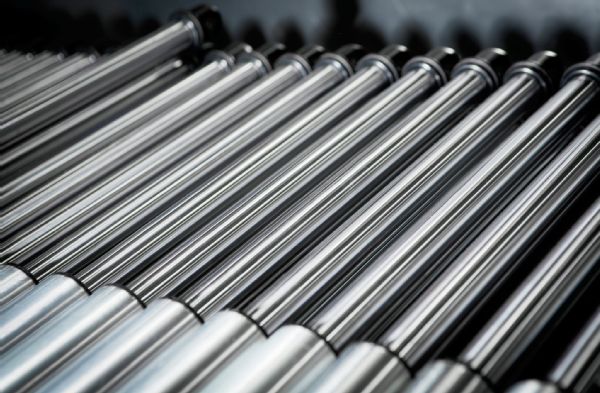 “An air shock shaft’s bending resistance comes from the larger diameter, thus it does not need the high strength of the 17-4 h900 we use in our Factory Series coilover and bypass shocks in order to avoid buckling or bending,” explained FOX Marketing Manager Brian Godfrey.
“An air shock shaft’s bending resistance comes from the larger diameter, thus it does not need the high strength of the 17-4 h900 we use in our Factory Series coilover and bypass shocks in order to avoid buckling or bending,” explained FOX Marketing Manager Brian Godfrey.
The 4130 is common for chassis and fabricated axlehousing construction due to its increased tensile strength when compared to other types of tubing. Heat treating can make 4130 even stronger. “Using chromoly increases the yield strength of our axletubes by 44 percent over mild steel,” Thom Kingston of Spidertrax shared. “Heat treating is where the real magic happens though. We heat-treat the housing tubes in our Pro Series Housings, bumping the tube strength approximately 114 percent versus mild steel.” It is no coincidence that Kingston uses the word magic, as heat-treat temperatures and cooling techniques are closely guarded secrets in the manufacturing world. When properly performed though, it is clear that regardless of the application, 4130 responds well to heat treating.
The 4340 is commonly used for high-strength axleshafts due to its tensile strength, fatigue resistance, and favorable reaction to heat treating. Adding vanadium and silicon to 4340 results in 300M, which is even more fatigue and impact resistant. The 300M has a tensile strength 40 percent higher than 4340 and is the exotic material of choice for axleshafts, transmission shafts, and U-joints that are nearly indestructible, but they don’t come cheap.
What Makes A Tube Strong
Now that we have a basic understanding of the elements that comprise steel and alloys, we can look more closely at their applications. Tubing is the foundation of the Dirt Sports Nation. We use it for rollcages, chassis, suspension links, axletubes, and more. There are a variety of factors beyond material though that effect the strength of a given tube. The most important include the tubing diameter, wall thickness, and construction technique. The larger the diameter, the stronger the tube, since it has a higher bending moment. This is why you see 4-inch axletubes under Trophy Trucks. Wall thickness is fairly straightforward and intuitive; the thicker the material the better it will resist denting and bending. That leaves construction. The most common types of tubing are Electric Resistance Welded (ERW), Drawn Over Mandrel (DOM), and seamless.
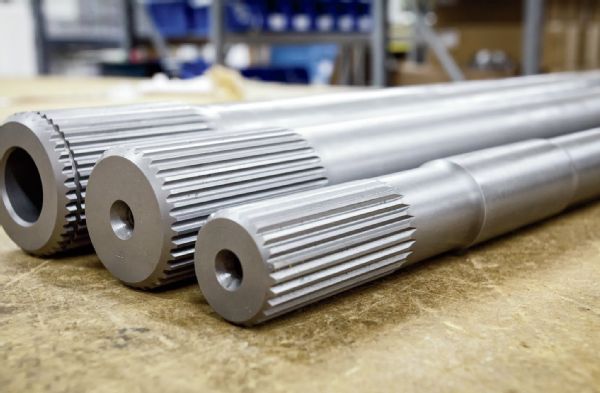 The 4340 chromoly steel is often used for aftermarket axleshafts. Even without increasing the diameter or the spline count, 4340 offers a big boost in strength over stock 1039 axleshafts, particularly if they have been heat-treated.
The 4340 chromoly steel is often used for aftermarket axleshafts. Even without increasing the diameter or the spline count, 4340 offers a big boost in strength over stock 1039 axleshafts, particularly if they have been heat-treated.
ERW is the most economical type of tubing. It is manufactured by rolling a flat bar of 1020 steel into a circle and then welding the two edges together. It can either be Hot Rolled (HREW) or Cold Rolled (CREW). HREW heats up the base material to make it more malleable and easier to roll. As a result it is less expensive than CREW, which is subjected to higher pressures to roll the sheet into tubing. CREW will be stronger due to a better crystal lattice structure and tends to have more uniform wall thickness and HREW. An easy way to tell the two apart is the presence of scale on HREW, which must be removed prior to welding.
Like ERW, DOM is a process, not a material. It typically consists of 1026 steel or 4130 chromoly, the latter of which is the material of choice for high-end race vehicles. DOM tubing is ERW tubing that has been drawn through a die and over a mandrel to create improved tolerances and concentricity. Cold working the steel in this manner reduces stress risers and results in higher tensile strength. DOM is sometimes confused with seamless tubing, but they are very different in both price and strength. You rarely find seamless tubing in our Nation. Seamless tubing begins with billet steel that is extruded over a mandrel at high pressures and temperatures of 2,250 degrees F, which makes the material easier to form.
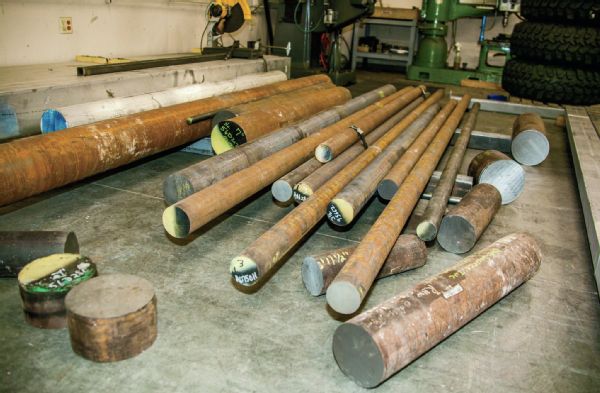 Steel bar stock can be machined into a variety of components including input and output shafts. Heat-treating after machining is recommended, as is checking the components on a regular basis for any twisting or cracks that could suggest impending failure.
Steel bar stock can be machined into a variety of components including input and output shafts. Heat-treating after machining is recommended, as is checking the components on a regular basis for any twisting or cracks that could suggest impending failure.
Knowledge is King
Armed with a better understanding of materials and properties, we can all make more informed decisions when fabricating or purchasing products. Two components that look the same may in fact vary greatly in strength (and price) based on their construction. Using the right materials for a given task eliminates “bad luck” and will help ensure that you reach the finish line. Greater strength and wear characteristics can also actually save you money in the long run. We have learned a lot in the last 4,000 years.



